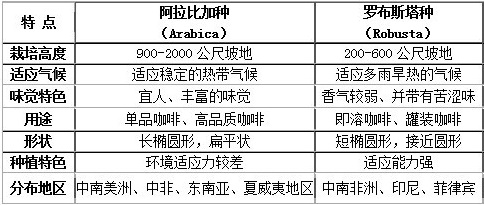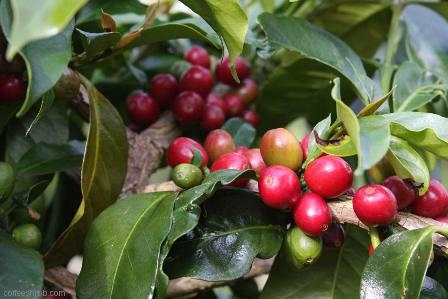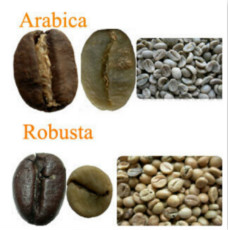What's the difference between Arabica coffee beans and Roberta coffee beans? Arabica Coffee Tree Robbas
Planting condition difference
[Elaraby Kadou]
Arabica coffee has harsh planting conditions, weak disease resistance, high altitude requirements, slow growth, high quality, and fine processing of raw beans.
Growing at colder altitudes in the tropics, it is an important kind of commercial coffee with a fruiting period of less than three years and a high-quality aroma and sour taste. Arabica coffee beans are mainly produced in South America (except parts of Argentina and Brazil), Central America, Africa (Kenya, Ethiopia, etc., mainly East African countries), Asia (parts of Yemen, India and Papua New Guinea)
[Arabica Coffee Tree]
The Arabica coffee tree, which originated in Ethiopia, accounts for 70% of the world's coffee bean production. The world-famous blue mountain caffeine and mocha coffee are almost all Arabica species. Arabica coffee trees are suitable for growing in high mountains with large temperature difference between day and night, and ten soils with low humidity and good drainage; the ideal altitude is 500m ~ 2000 m, and the higher the altitude is, the better the quality is. However, due to the weak ability to resist diseases and insect pests, it is more difficult to grow than the other two coffee trees.
[Robusta beans]
Robusta grows in the lowlands of 200m ~ 600m above sea level. He likes the warm climate and requires a temperature of 24029 ℃. The requirement for rainfall is not high. However, this variety depends on insects or wind to pollinate, so it takes 9MU / 11 months from pollination to fruit, which is longer than the Arabica species.
[Robasta Coffee Tree]
The Robastian coffee tree, which originated in the Congo in Africa, accounts for about 20% to 30% of the world's production. Luoba Jinta coffee tree is suitable for planting in the lowlands below 500 meters above sea level, has strong adaptability to external environment, has strong resistance to disease, and has high yield. It does not need much artificial care during soil preparation, weeding and pruning, and can be allowed to grow in the wild. It is a kind of coffee tree that is easy to cultivate.

Important Notice :
前街咖啡 FrontStreet Coffee has moved to new addredd:
FrontStreet Coffee Address: 315,Donghua East Road,GuangZhou
Tel:020 38364473
- Prev

Coffee Variety Daquan | introduction of ancient coffee varieties, introduction of native and mutant species and special flavor
Coffee has more than a hundred varieties of coffee, the more common coffee are: Arabica Arabica, outstanding personality, unique flavor, is the main force of boutique coffee, mainly used for coffee shop management and high-end coffee market supply; Robusta Robusta, rough flavor, high caffeine content, not boutique coffee, often used for instant coffee processing and Italian coffee mixed beans. Ethiopia Typi
- Next

What's the difference between Arabica coffee beans and Roberta coffee beans? Different shapes, different flavors.
[shape difference] Elaraby coffee bean fruit is oval, there are generally two slightly flat beans, the bean body is small and round, the front is long oval, the middle crack is narrow and curved in S shape, and the arc on the back of the bean is flat. it is mainly produced in South America, Central American countries, Africa and Asia. A small amount of Arabica coffee is also grown in Yunnan, Hainan and Taiwan of China.
Related
- Guji coffee producing area of Guji, Ethiopia: Humbela, Shakiso, Wulaga
- What is the most expensive variety of Qiloso in BOP multi-variety group?
- How to store the coffee beans bought home?
- Why are Yemeni coffee beans so rare now?
- Ethiopian Sidamo all Red Fruit Sun Sun Santa Vini Coffee beans
- SOE is mostly sour? What does it mean? Is it a single bean? what's the difference between it and Italian blending?
- Is Italian coffee beans suitable for making hand-brewed coffee?
- How to choose coffee beans when making cold coffee? What kind of coffee beans are suitable for making cold coffee?
- Just entered the pit to make coffee, what kind of coffee beans should be chosen?
- Can only Japan buy real Blue Mountain Coffee? What are authentic Jamaican Blue Mountain coffee beans?

